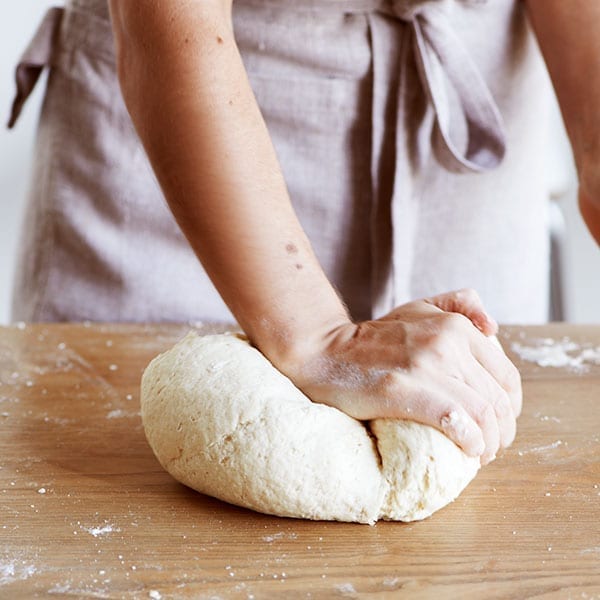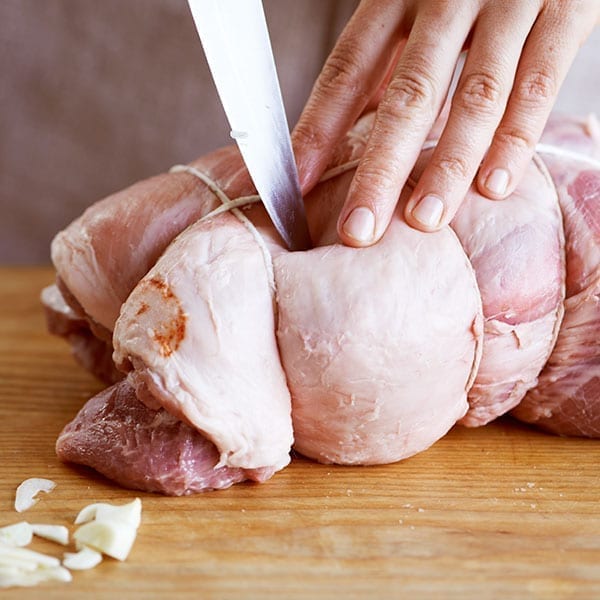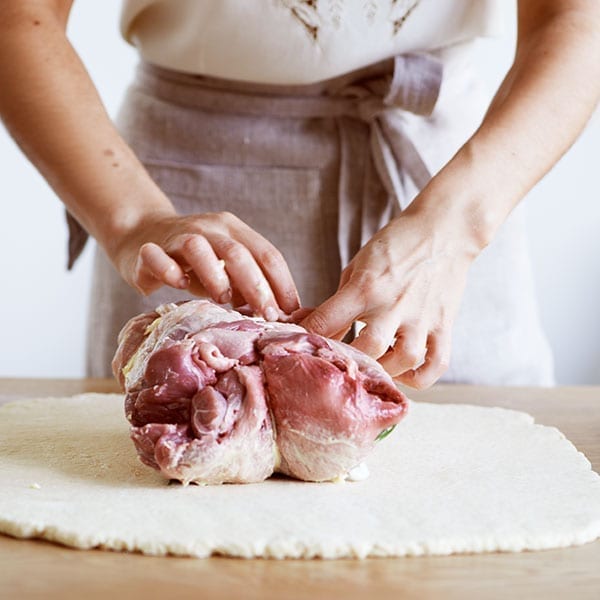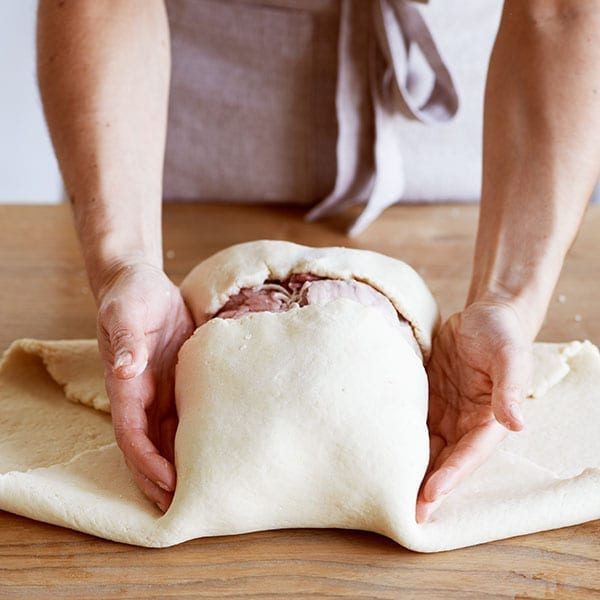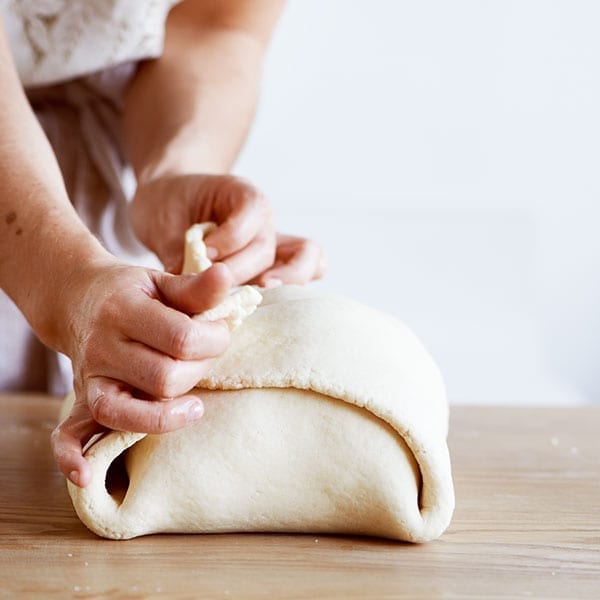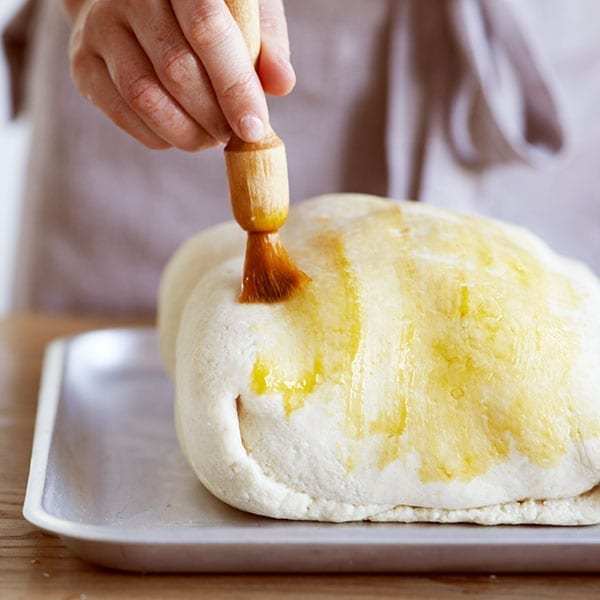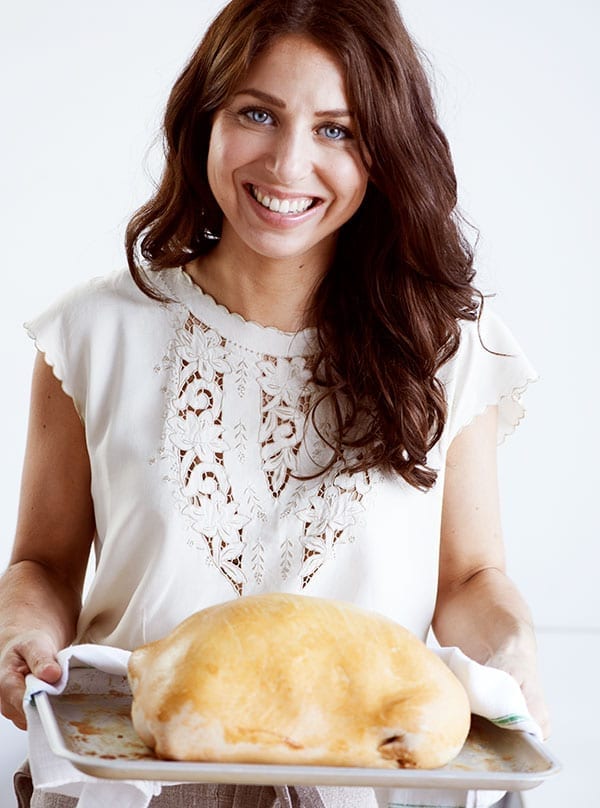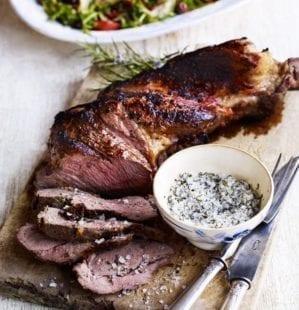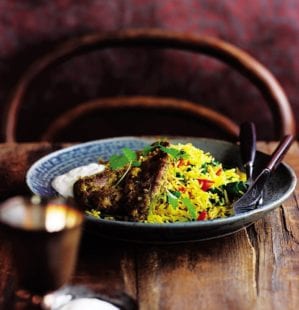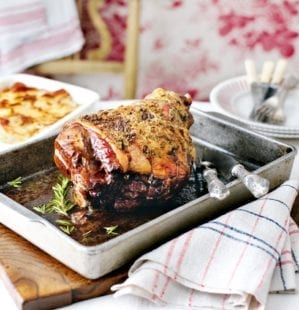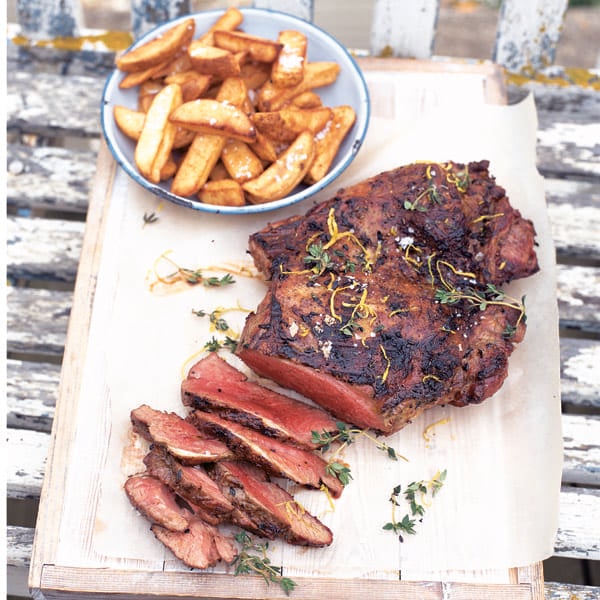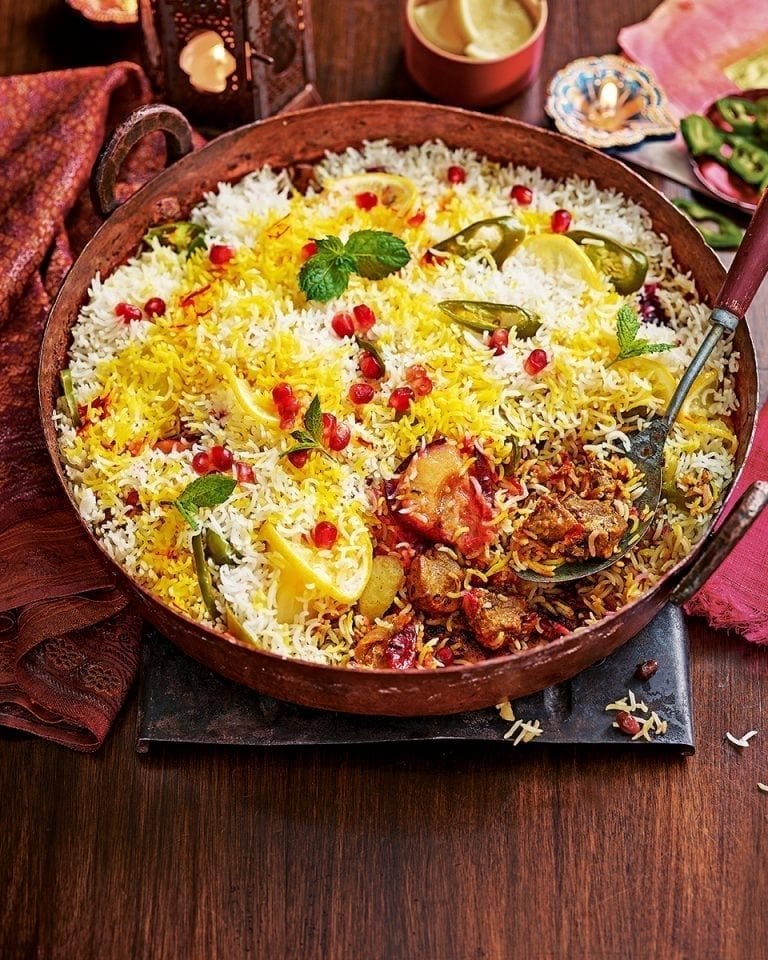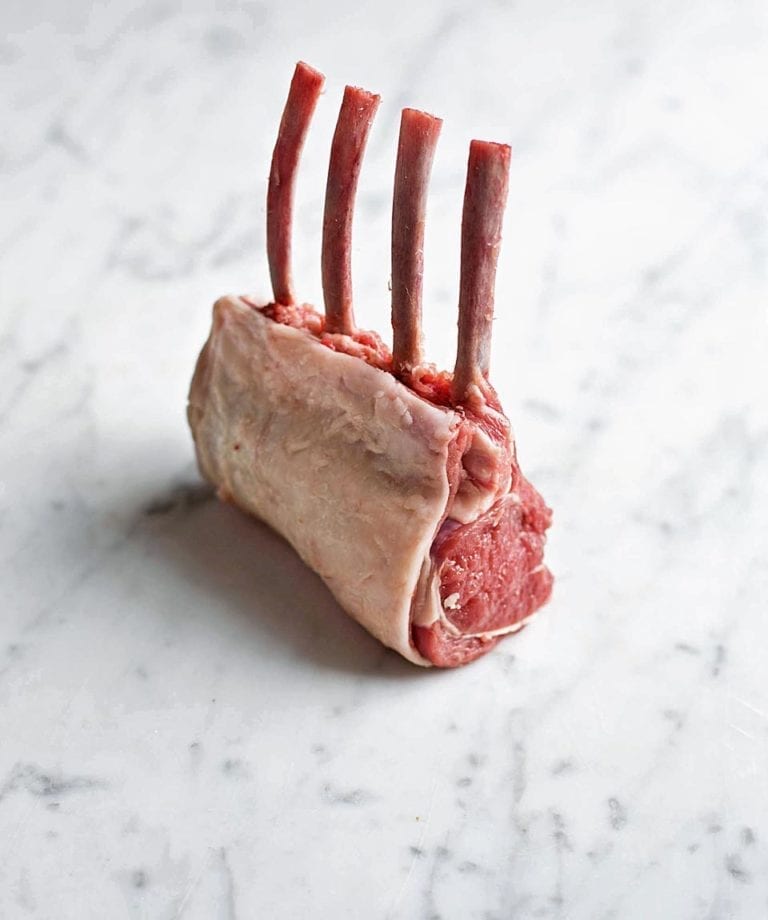How to make salt-baked lamb
Learn how to make salt-baked lamb in this step-by-step by chef Florence Knight. She says: “This is my favourite way to cook lamb. The salt dough crust traps in the juices, producing the most succulent meat – glorious with the sticky, tangy roast apples. It’s perfect for a relaxed Sunday lunch with family and friends, and it’s an exciting dish to serve – like opening a long-anticipated present.”
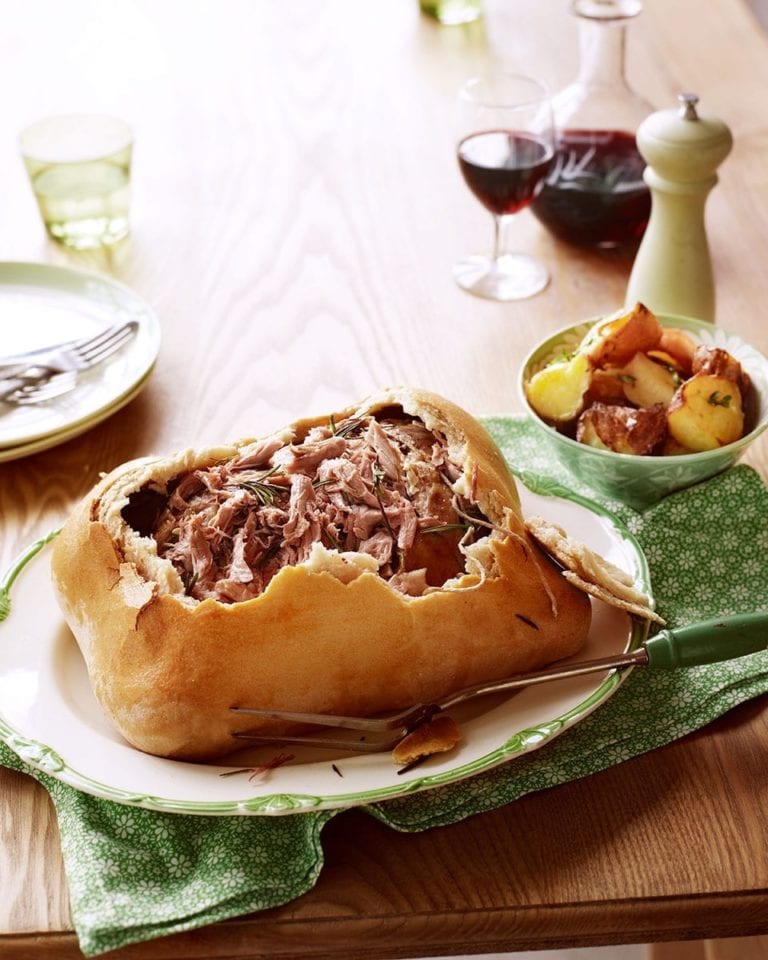
Serves 4-6.
Hands-on time 40 min, oven time 4 hours 10 min
Florence says: “I like to use cox apples in this dish, but you can use other varieties if you prefer. As for the salt dough, feel free to use wholemeal or white bread flour.”
Food team’s tip
You need 7 egg whites for the salt dough, but only 1 yolk for the glaze. Stir a pinch of salt through the remaining yolks, then freeze in ice cube trays. Use for making sauces or mayonnaise (use sugar instead of salt if you plan to use the yolks in sweet recipes).
You will need
For the lamb
- 1.6kg boneless British lamb shoulder, tied into a neat rectangle (ask your butcher to do this)
- 1 tbsp unsalted butter at room temperature
- 3 garlic cloves
- 3 fresh rosemary sprigs
For the apples and potatoes
- 900g desiree potatoes
- 4 tbsp extra-virgin (or regular) olive oil
- 4 fresh thyme sprigs
- 4 eating apples
For the salt dough
- 7 medium free-range eggs (see food team’s tip above)
- 750g strong bread flour (see recipe introduction), plus extra to dust
- 450g fine salt
- 250-270ml cold water
- An hour before cooking, take the lamb out of the fridge to come up to room temperature. Heat the oven to 200°C/fan180°C/gas 6 and put in a deep roasting tin to warm up.
- Quarter the potatoes, then add them to a large pan of cold water with a pinch of salt. Bring to the boil, then reduce the heat and simmer for 6 minutes. Drain in a colander, giving them a good shake to rough them up.
- Pour the olive oil into the hot roasting tin, then add the potatoes and shake to coat them in the oil. Sprinkle with a pinch of salt and the thyme sprigs, then roast for 40 minutes until the potatoes are almost cooked, with a little colour.
- Meanwhile, make the dough. Separate the eggs (see food team’s tip), then put the egg whites, flour, salt and 250ml water in a large bowl. Use your hands to bring the dough together (or use a stand mixer with a dough hook) add a little more water if it’s too flaky (see Florence’s tips for success below).
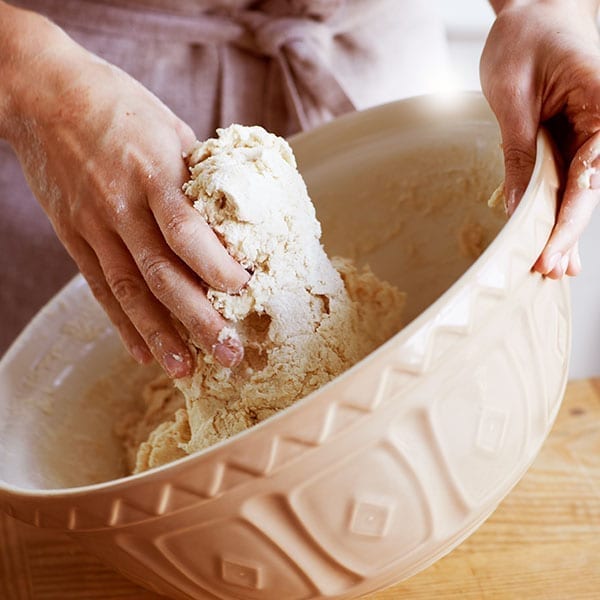
- Turn the dough out onto a floured surface, then knead for 8 minutes
or until smooth.

- Return to the bowl and cover with cling film to prevent the dough drying out.
- When the potatoes are almost cooked, take them out of the oven, set aside and turn the heat down to 150°C/fan130°C/gas 2.
- Rub the butter over the lamb, then use a small sharp knife to make shallow incisions into the fat. Thinly slice the garlic and break the rosemary into smaller sprigs, then push them into the incisions. Season.

- On a floured surface, roll the dough into a rectangle about 1cm thick. Put the lamb fat-side down
in the centre of the rectangle.

- Brush the edges of the dough with water, then fold it up and over the lamb to encase it like a parcel.

- Pinch the edges together to seal (see Florence’s tips for success below).

- Lift the lamb into a baking tray, sealed-side down. Beat one of the egg yolks, then brush over the dough. Bake for 3 hours, then remove from the oven and allow to rest.

- While the lamb is resting, turn the oven back up to 200°C/fan180°C/ gas 6. Quarter and core the apples, then add to the roasting tin the potatoes are in. Roast for 30 minutes or until the apples are tender and the potatoes are golden.
- For full theatrical effect, serve the lamb in the crust, then break it open at the table (note: don’t eat the salt dough). Shred the meat, then serve on warmed plates with the roast apples and potatoes.

Nutritional information (for 6 servings) 655kcals, 31.2g fat (11.5g saturated), 57.7g protein, 36.3g carbs (11.8g sugars), 0.5g salt, 5.4g fibre
Wine editor’s choice: Rioja crianza is a great partner for this.
Florence’s tips for success
The meat
- It goes without saying you should buy British lamb shoulder to use in this recipe. It won’t be quite as tender as spring lamb, as the animals have had a summer of grazing, so you may need to use a knife to carve some of it rather than shredding it. However, the meat will have lots of flavour and, cooked like this, it will be beautifully succulent.
The dough
- It should be soft and malleable but not at all wet – a bit like Play-Doh. Begin by adding the minimum amount of water, then add a little more, a splash at a time, if the dough is too dry.
- The secret to tender salt-baked lamb is to seal in the meat and all its juices. Try to make sure there are no gaps in the dough parcel through which liquid can seep out during cooking. Fold it tightly around the lamb, then seal by pressing the edges firmly together. If a little liquid does seep out it’s not the end of the world, but the less the better.
The get-ahead plan
- This dish is best cooked on the day you want to eat it, but if you really need to get ahead you can cook the lamb for 2 hours the night before, as in the recipe. Cool completely, then cover and store in the fridge overnight. The next day, take the lamb out of the fridge an hour before you want to cook it, so it comes up to room temperature, then finish baking in the oven for 90 minutes to ensure the meat is piping hot throughout. Check the internal temperature with a digital probe thermometer – it should be at least 65ºC.
Subscribe to our magazine
Food stories, skills and tested recipes, straight to your door... Enjoy 5 issues for just £5 with our special introductory offer.
Subscribe
Unleash your inner chef
Looking for inspiration? Receive the latest recipes with our newsletter
